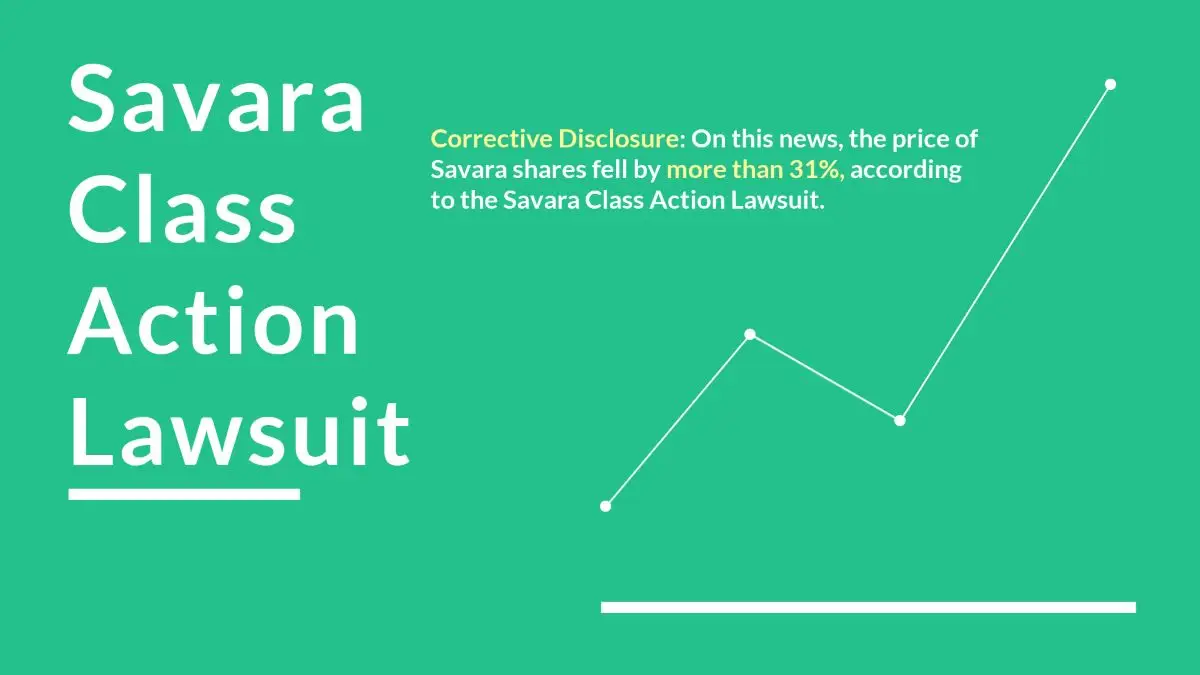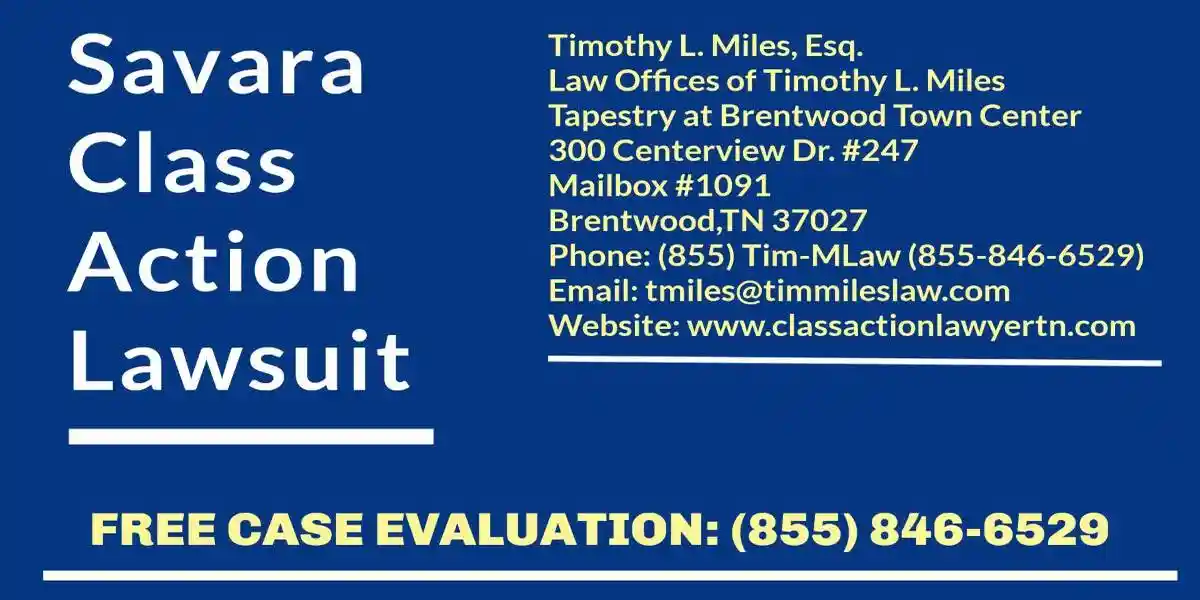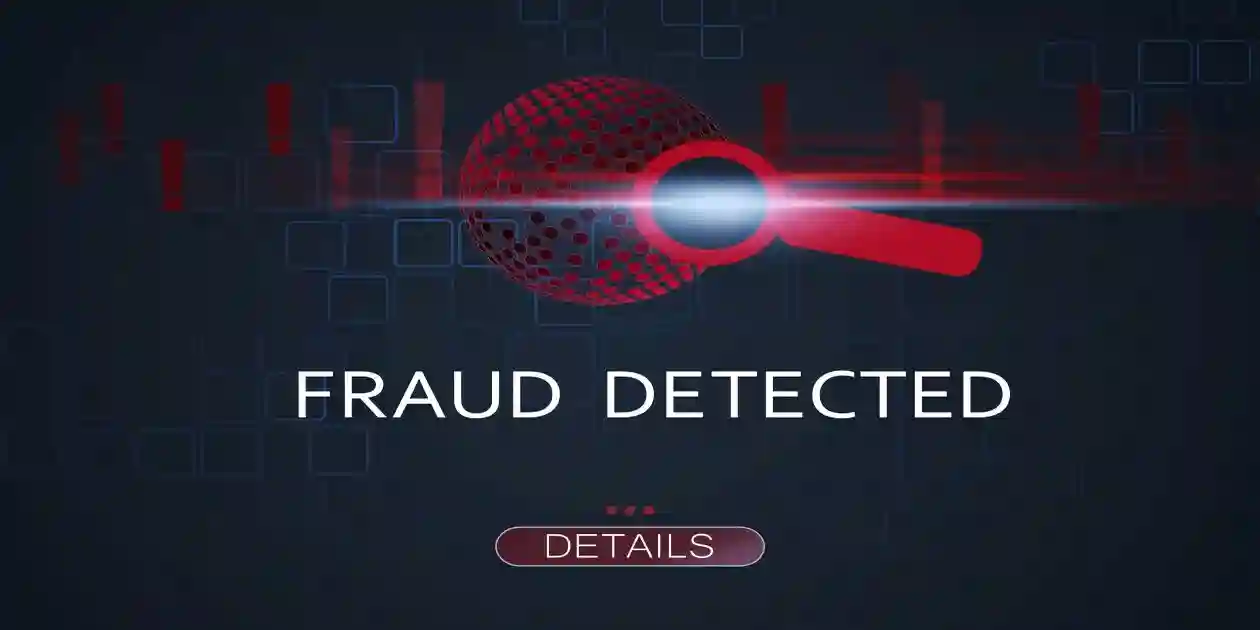Introduction to the Savara Class Action Lawsuit
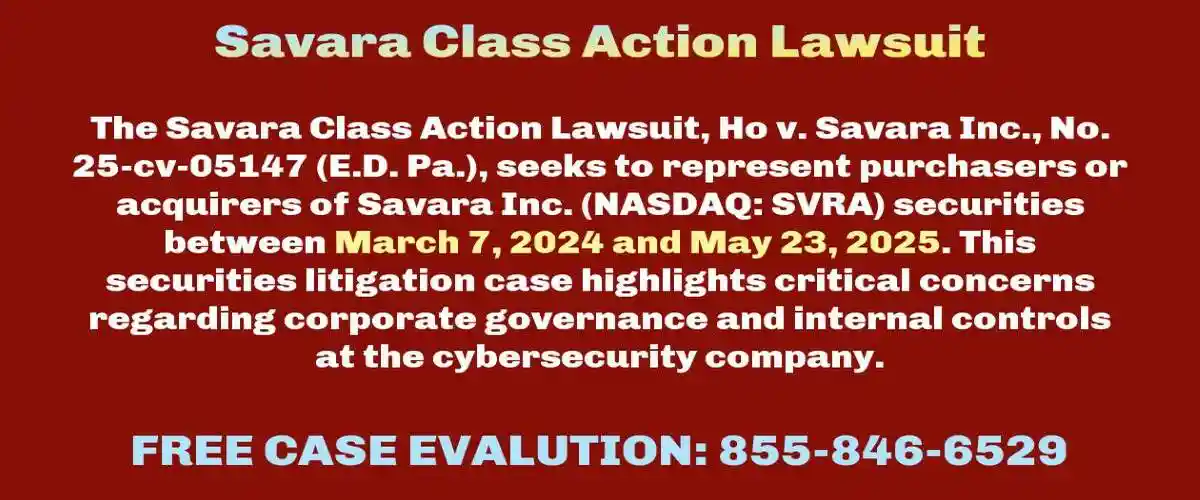
- Savara Class Action Lawsuit: The Savara Class Action Lawsuit, Ho v. Savara Inc., No. 25-cv-05147 (E.D. Pa.), seeks to represent purchasers or acquirers of Savara Inc. (NASDAQ: SVRA) securities between March 7, 2024 and May 23, 2025. This securities litigation case highlights critical concerns regarding corporate governance and internal controls at the cybersecurity company.
- Basis for Filing: The Savara Class Action Lawsuit alleges that Savara is a clinical stage biopharmaceutical company that focuses on rare respiratory diseases. Savara’s lead product candidate is MOLBREEVI (also referred to as “molgramostim”), an inhaled granulocyte-macrophage colony-stimulating factor.
- In December 2024, Savara began a rolling submission of a Biologics License Application (“BLA”) to the U.S. Food and Drug Administration (“FDA”) for MOLBREEVI for the potential treatment of aPAP (the “MOLBREEVI BLA”).
- i) the MOLBREEVI BLA lacked sufficient information regarding MOLBREEVI’s chemistry, manufacturing, and/or controls;(ii) accordingly, the FDA was unlikely to approve the MOLBREEVI BLA in its current form;
- (iii) the foregoing made it unlikely that Savara would complete its submission of the MOLBREEVI BLA within the timeframe it had represented to investors;
- (iv) the delay in MOLBREEVI’s regulatory approval increased the likelihood that Savara would need to raise additional capital.
- Complaint: The Savara Class Action Lawsuit further alleges that, on May 27, 2025, Savara issued a press release “announc[ing] that the Company received [a refusal to file (“RTF”)] letter from the FDA for the [MOLBREEVI BLA] as a therapy to treat patients with [aPap]” and revealed that “[u]pon preliminary review, the FDA determined that the [MOLBREEVI BLA] was not sufficiently complete to permit substantive review and requested additional data related to Chemistry, Manufacturing, and Controls (CMC).”
- Corrective Disclosure: On this news, the price of Savara shares fell by more than 31%, according to the Savara Class Action Lawsuit.
- Lead Plaintiff Motion: Lead plaintiff motions for the Savara Class Action Lawsuit must be filed with the court no later than November 7, 2025. When a securities class action is filed, the Private Securities Litigation Reform Act (PSLRA) requires that within 20 days of the complaint filing, notice must be published informing shareholders of the pending litigation and their right to move the court to serve as lead plaintiff. This process ensures proper representation of shareholder interests in securities litigation cases.
Misrepresentation of Financial Information
Misrepresentation of Financial Information: Companies may deliberately provide false or misleading financial statements to artificially inflate stock prices, often through:
Omissions of Material Facts: Securities fraud frequently involves failing to disclose critical information that reasonable investors would consider important in making investment decisions. This includes:
Insider Trading: Corporate executives may engage in unauthorized trading based on material non-public information, violating fundamental principles of market fairness and corporate governance. This can involve:
Consequences of Securities Fraud Like in the Savara Class Action Lawsuit
The repercussions of securities fraud extend far beyond immediate financial losses, impacting:
Companies found engaging in fraudulent practices often face:
The Role of Regulatory Bodies
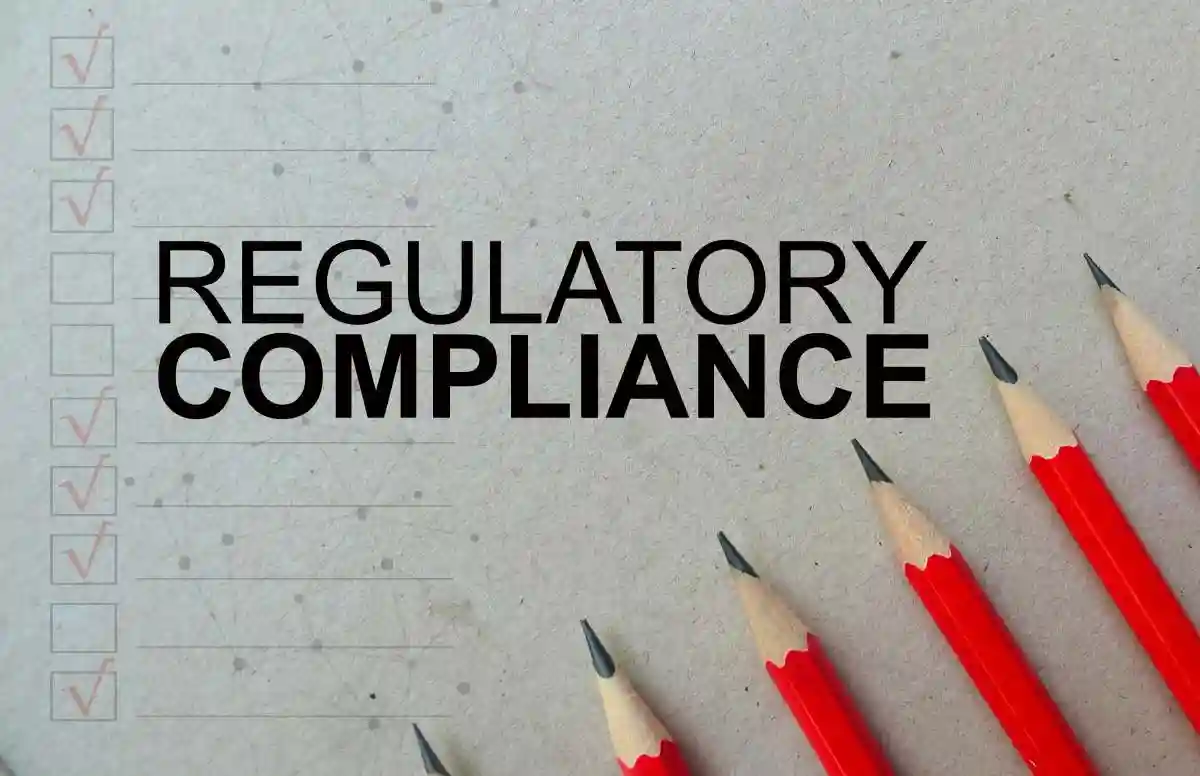
Regulatory authorities, particularly the Securities and Exchange Commission (SEC), play a vital role in:
The SEC maintains broad investigative powers and can impose significant penalties, including:
Importance of Compliance
Maintaining robust compliance programs proves essential for:
Companies must prioritize:
Protecting Your Investments
Investors must remain vigilant in safeguarding their investments through:
Effective protection strategies include:
Strategies for Investor Protection
Here are comprehensive strategies investors should consider to protect their interests and navigate potential securities fraud:
Conduct Thorough Due Diligence in the Savara Class Action Lawsuit
Before making any investment decisions, shareholders must conduct extensive research focusing on:
- Comprehensive analysis of the company’s financial statements, paying special attention to revenue recognition practices and internal controls
- Detailed evaluation of management’s track record in maintaining strong corporate governance
- Assessment of the company’s regulatory compliance history and any past securities litigation
- Review of analyst reports and independent research highlighting potential red flags
- Examination of the company’s corporate governance structure, including board independence and audit committee effectiveness
Warning signs that warrant further investigation include:
- Frequent changes in executive leadership or board composition
- History of regulatory violations or securities litigation
- Weak or ineffective internal controls
- Inconsistent financial reporting patterns
- Unusual related-party transactions
Monitor Company Communications and Disclosures
Maintaining vigilant oversight of company communications proves essential:
Pay particular attention to:
Implement Portfolio Diversification Strategies
Effective diversification remains crucial for risk management:
Key diversification principles include:
The Lead Plaintiff Deadline in the Savara Class Action Lawsuit
- Lead plaintiff motions for the Savara Class Action Lawsuit must be filed with the court no later than November 7, 2025.
- This securities litigation alleges that the company made misleading statements about its internal controls and financial condition during the Class Period.
- When a securities class action is filed, shareholders have important rights and deadlines to be aware of:
The Eligibility Criteria for Lead Plaintiff Appointment in the Savara Class Action Lawsuit
- To be eligible for appointment as the lead plaintiff in the Savara Class Action Lawsuit, an investor must meet several key criteria established under securities laws to protect shareholder interests:
- The investor must have purchased Savara stock during the Class Period
- The investor must have suffered financial losses related to their investment
- The investor must be willing to represent the interests of all class members
- The investor must have significant financial interest in the litigation outcome
- The investor must meet certain legal requirements for serving as lead plaintiff
- It is crucial to note that both domestic and international investors who meet these criteria are eligible to seek appointment as the lead plaintiff in the class action lawsuit, as courts have consistently recognized the rights of non-U.S. investors in securities litigation. The lead plaintiff plays a vital role in overseeing the Savara Class Action Lawsuit and protecting shareholder interests through proper corporate governance.
What Is the Securities Act of 1934?
- The Securities Exchange Act of 1934 represents cornerstone legislation enacted to regulate securities markets and protect investors through requirements for internal controls and corporate governance standards. This law provides the foundation for many modern securities litigation claims involving misleading statements about company operations and financial condition.
- Overall, the Securities Act of 1934 plays a pivotal role in maintaining market integrity and investor confidence through robust internal controls and corporate governance requirements. The Act establishes comprehensive frameworks for securities litigation and regulatory enforcement actions when companies make misleading statements or fail to maintain adequate controls.
- These provisions help ensure transparency and accountability in financial markets while protecting shareholder interests through various enforcement mechanisms.
What Damages Am I Entitled in the Savara Class Action Lawsuit
- In securities class action lawsuits like the Savara Class Action Lawsuit, plaintiff damages are typically calculated based on out-of-pocket losses resulting from alleged misstatements or omissions about internal controls and corporate governance practices.
- These calculations consider factors like the artificial inflation in stock price during the Class Period and the subsequent price declines when the truth is revealed through corrective disclosures. Expert analysis helps quantify damages by examining market efficiency and loss causation.
Investor Rights in the Savara Class Action Lawsuit
- Investors impacted by the Savara Class Action Lawsuit have specific legal rights established under securities laws to protect shareholder interests. These rights include the ability to seek appointment as lead plaintiff, participate as a class member, object to settlement terms, opt out of the class, and submit claims for damages. Understanding these rights is essential for shareholders evaluating their options for pursuing recovery through securities litigation.
- Investors who suffered losses related to the Savara Class Action Lawsuit can pursue several strategic options based on their specific circumstances and objectives. They may choose to: 1) actively participate by seeking lead plaintiff appointment, 2) remain passive class members, 3) opt out and pursue individual claims, or 4) object to settlement terms. Each option carries distinct advantages and considerations regarding control, timing, and potential recovery.
The Class Period in the Savara Class Action Lawsuit
In a securities class action, such as the Savara Class Action Lawsuit class action lawsuit:
- The class period refers to the specific time frame during which the alleged fraudulent activity occurred. It is the period in which the plaintiffs claim to have suffered financial losses due to misrepresentations or omissions made by the defendants.
- The class period is crucial in determining who can be included in the class and seek damages.
- It typically starts when the alleged fraud was first publicly disclosed or when investors should have reasonably become aware of it.
- The class period usually ends when the alleged fraud is revealed to the public or when the plaintiffs file a lawsuit.
- The length of the class period can vary depending on the specific circumstances of each case.
Pleading Materiality in the Savara Class Action Lawsuit
- The PSLRA introduces heightened pleading standards in securities class action lawsuits, requiring plaintiffs to meet more rigorous requirements in their initial complaints. This includes the requirement to plead with particularity each statement alleged to be misleading and the reasons why those statements are misleading.
- For statements based on information and belief, plaintiffs must state with particularity all facts on which that belief is formed. Additionally, plaintiffs must plead and prove that the alleged misconduct caused the purported loss. The Supreme Court has clarified that a plaintiff must allege that the stock price fell after the truth of the fraud became known.
- Materiality is a crucial concept in securities litigation, as it determines the significance of information to a reasonable investor. Under the PSLRA, a plaintiff must prove that the alleged misrepresentation or omission was material, meaning it would have been important to a reasonable investor in making their investment decisions.
- The legal framework for materiality is defined and regulated by the federal securities laws, particularly the Securities Exchange Act of 1934, which imposes a duty on companies to disclose all material information to their investors.
- Different parties involved in securities litigation may have varying perspectives on materiality. Plaintiffs must establish materiality to prove that the defendant’s actions or omissions had a direct impact on their investment decisions, while defendants may argue that the information was immaterial.
- The legal standard for materiality is based on the context in which the alleged misrepresentation or omission occurred and whether a reasonable investor would have considered it significant.
- The PSLRA’s materiality standard is significant in securities litigation, as it helps to prevent frivolous lawsuits and ensures that only genuine claims are brought against companies. The act’s heightened pleading standards and materiality requirement are designed to protect investors and prevent the abuse of the securities litigation
Other Statutory Provisions of the PSLRA
- Early notice to class members. Within 20 days of filing the complaint, the plaintiff must publish notice advising class members of the pendency of the action, the claims asserted, the purported class period, and that any class member may move the court to serve as lead plaintiff. 15 U.S.C. §§ 77z-1(a)(3)(A), 78u-4(a)(3)(A).
- Motion for appointment as lead plaintiff. Within 60 days after publication of the notice to class members, any member of the class may move the court to become lead plaintiff. 15 U.S.C. §§ 77z-1(a)(3)(A)(i)(II), 78u-4(a)(3)(A)(i)(II).
- Court appointment of lead plaintiff. Within 90 days after publication of the notice to class members, the court shall consider any motions for lead plaintiff and appoint as lead plaintiff the member(s) of the purported plaintiff class that the court determines to be most capable of adequately representing the interests of class members. 15 U.S.C. §§ 77z-1(a)(3)(B)(i), 78u-4(a)(3)(B)(i).
- Lead Plaintiff’s Recovery: The PSLRA provides that the lead plaintiff’s recovery is limited to their pro rata share of the final judgment or settlement awarded to all other members of the class. 15U.S.C. §§ 77z-1(a)(4), 78u-4(a)(4). This provision does not limit lead plaintiff’s recovery of an award of reasonable costs
and expenses (including lost wages) directly relating to the representation of the class.
- Most Adequate Plaintiff: The PSLRA establishes a rebuttable presumption that the “most adequate plaintiff” is the person or group of persons that meets all of the following:
- Either filed the initial complaint or made a timely motion in response to the early notice to class members
- Has the largest financial interest in the relief sought by the class, as determined by the court
- Otherwise satisfies the requirements of Fed. R Civ. P. 23 (U.S.C.S. Fed Rules Civ Proc R 23)
Gathering and Organizing Relevant Evidence in the Savara Class Action Lawsuit
- In a securities class action lawsuit like the Savara Class Action Lawsuit, evidence is the cornerstone of building a compelling case. For affected shareholders, gathering and organizing all relevant financial and investment documentation is a crucial first step.
- The evidence will help substantiate claims of corporate misconduct and demonstrate the financial harm you may have suffered.
What documents do you need?
- Company documents: Gather all press releases, financial statements (like 10-K and 10-Q reports), and analyst reports related to Jasper Therapeutics that you have.
- Your investment history: Meticulously document your investment history with Molina Healthcare, including:
- Dates of all stock purchases and sales
- The quantities of shares bought or sold
- The prices of each transaction
- Communications: Compile any emails or other communications that shed light on the alleged wrongdoing.
- Brokerage records: Collect all relevant brokerage statements and confirmation slips.
How to organize your records in the Savara Class Action Lawsuit
- Start a file: Create a comprehensive file of all relevant documents.
- Categorize and date: Organize your documents by type and date. This will help your legal counsel easily retrieve and review information.
- Digital copies: If possible, keep digital copies of all documents in a secure location.
Staying Informed: Monitoring Case Developments
- In a securities class action lawsuit, keeping up with case developments is crucial for shareholders. As the Savara Class Action Lawsuit moves forward, new information can significantly impact the strategy and potential outcomes.
- Here’s how to stay informed and well-positioned throughout the process:
Rely on communication with your legal team
- Understanding the implications of new information, such as court rulings.
Follow news and market developments in the Savara Class Action Lawsuit
- Gain insights into market trends related to Savara Class Action Lawsuit.
Knowledge is power
Rights of Investors in the Savara Class Action Lawsuit
Investors affected by the Savara Class Action Lawsuit possess specific rights that they can exercise. Understanding these rights is vital for anyone considering involvement in the lawsuit.
Right to Information
- Investors have the right to receive accurate and timely updates regarding the Savara Class Action Lawsuit.
- This includes information on the case’s progress, potential settlements, and any necessary actions they may need to undertake.
Right to Participate
- Affected investors have the right to join the Savara Class Action Lawsuit.
- This allows them to collaborate with other investors in seeking compensation for their losses without the burden of filing individual lawsuits.
Right to Legal Representation
- Investors can seek legal counsel to navigate the complexities of the Savara Class Action Lawsuit.
- Legal professionals can provide guidance and support throughout the process.
- If you suffered substantial losses and wish to serve as lead plaintiff of the Savara Class Action Lawsuitor just have general questions about you rights as a shareholder, please contact attorney Timothy L. Miles of the Law Offices of Timothy L. Miles, at no cost, by calling 855/846-6529 or via e-mail at [email protected].
Options for Investors in the Savara Class Action Lawsuit
Investors facing losses due to the Savara Class Action Lawsuit have several options available to them. Each option carries its own implications and potential outcomes.
Joining the Class Action
- One of the most straightforward options for investors is to join the Savara Class Action Lawsuit.
- By doing so, they can collectively pursue compensation for their losses without the need for individual litigation.
Filing an Individual Claim
- In certain situations, investors may opt to file individual claims instead of joining the Savara Class Action Lawsuit.
- This option may be appropriate for those who believe their losses are significant enough to warrant separate legal action.
Seeking Legal Advice
- Consulting with a legal professional experienced in securities law can provide investors with insights into their best course of action.
- Legal experts can help assess the merits of individual claims versus joining the Savara Class Action Lawsuit.
The Role of Law Firms in the Savara Class Action Lawsuit
- Law firms play a crucial role in the Savara Class Action Lawsuit.
- They provide the necessary legal experience and representation for investors seeking to recover their losses.
Selecting a Law Firm in the Savara Class Action Lawsuit
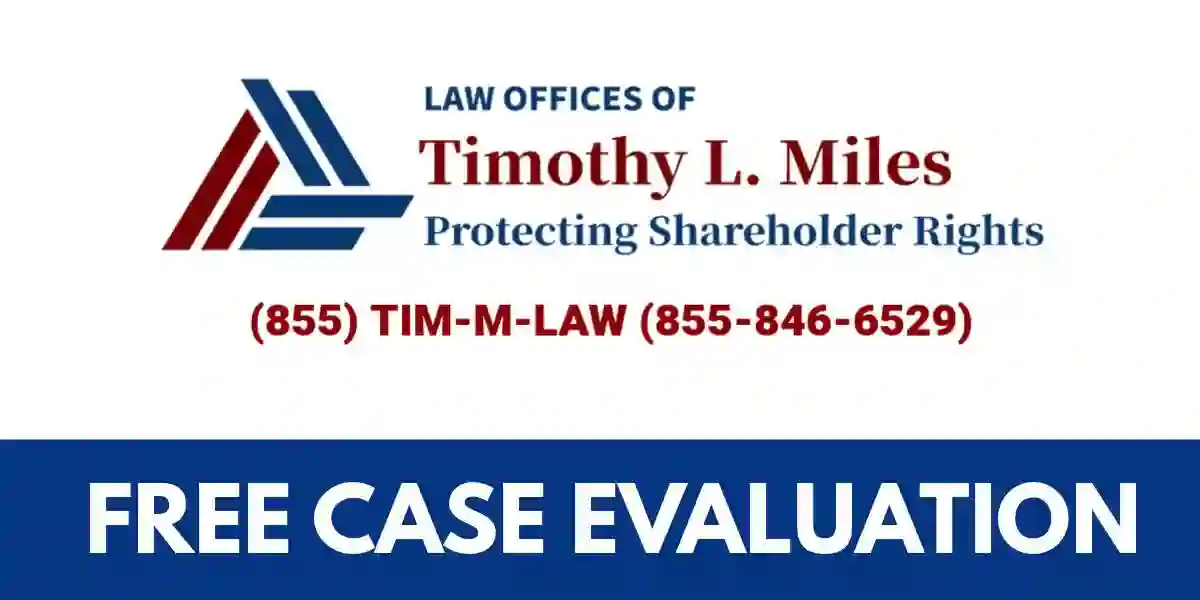
- Investors have the option to choose a law firm that practices securities fraud cases.
- A reputable firm can offer valuable insights and increase the likelihood of a favorable outcome.
- If you suffered substantial losses and wish to serve as lead plaintiff of theSavara Class Action Lawsuit or just have general questions about you rights as a shareholder, please contact attorney Timothy L. Miles of the Law Offices of Timothy L. Miles, at no cost, by calling 855/846-6529 or via e-mail at [email protected].
Frequently Asked Questions About the Savara Class Action Lawsuit
What initiated the Savara class action lawsuit?
The Savara class action lawsuit was initiated by investors alleging that Savara provided misleading information regarding its financial health and operations, resulting in financial losses.
How can I join the Savara class action lawsuit?
If you purchased shares during the class period and suffered a loss, then you are automatically a member of the class in the Savara class action lawsuit and do not need to do anything at this point unless you are considering moving for lead plaintiff.
What are the potential benefits of a Savara class action lawsuit?
Class action lawsuits allow individual investors to collectively seek justice and compensation, which might be challenging to pursue individually. They also promote corporate accountability.
How long will the Savara class action lawsuit take to resolve?
The duration of class action lawsuits can vary significantly, depending on the complexity of the case, legal strategies, and whether settlements are reached. It could take several months to years.
Contact Timothy L. Miles Today About a Savara Class Action Lawsuit
If you suffered substantial losses and wish to serve as lead plaintiff of the Savara class action lawsuit, or just have general questions about you rights as a shareholder, please contact attorney Timothy L. Miles of the Law Offices of Timothy L. Miles, at no cost, by calling 855/846-6529 or via e-mail at [email protected]. (24/7/365).
Timothy L. Miles, Esq.
Law Offices of Timothy L. Miles
Tapestry at Brentwood Town Center
300 Centerview Dr. #247
Mailbox #1091
Brentwood,TN 37027
Phone: (855) Tim-MLaw (855-846-6529)
Email: [email protected]
Website: www.classactionlawyertn.com
Facebook Linkedin Pinterest youtube
Visit Our Extensive Investor Hub:
Learning for Informed Investors



